The moon completes one lunar cycle in 29 days, 12 hours, 44 minutes, and 2.8 seconds. A moon disc lying below your watch’s dial is split into two moon cycles thus has 59 teeth, double the approximately 29.5 day cycle, advances one tooth per day many times using the hour hand drive. Simple yet beautiful— the moon phase complication has been ever present in the history of horology from early clocks to modern wristwatches.
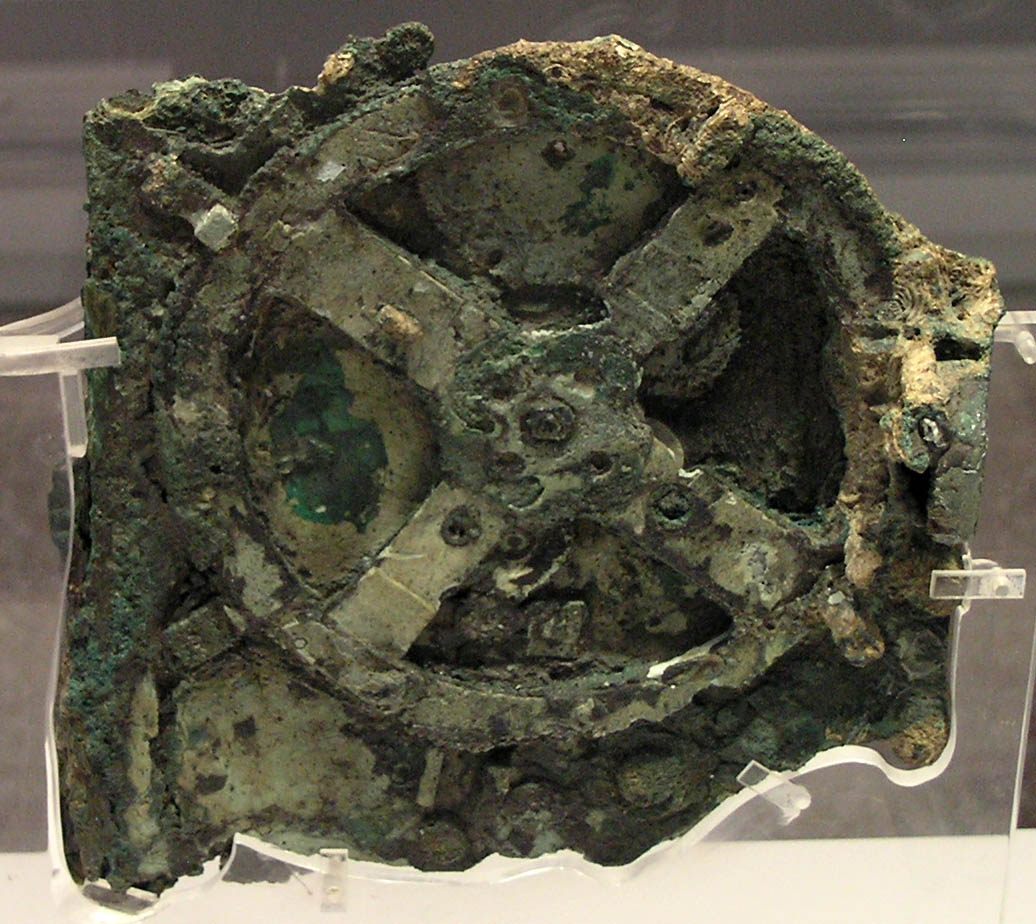 Photo from Wikipedia
Photo from Wikipedia 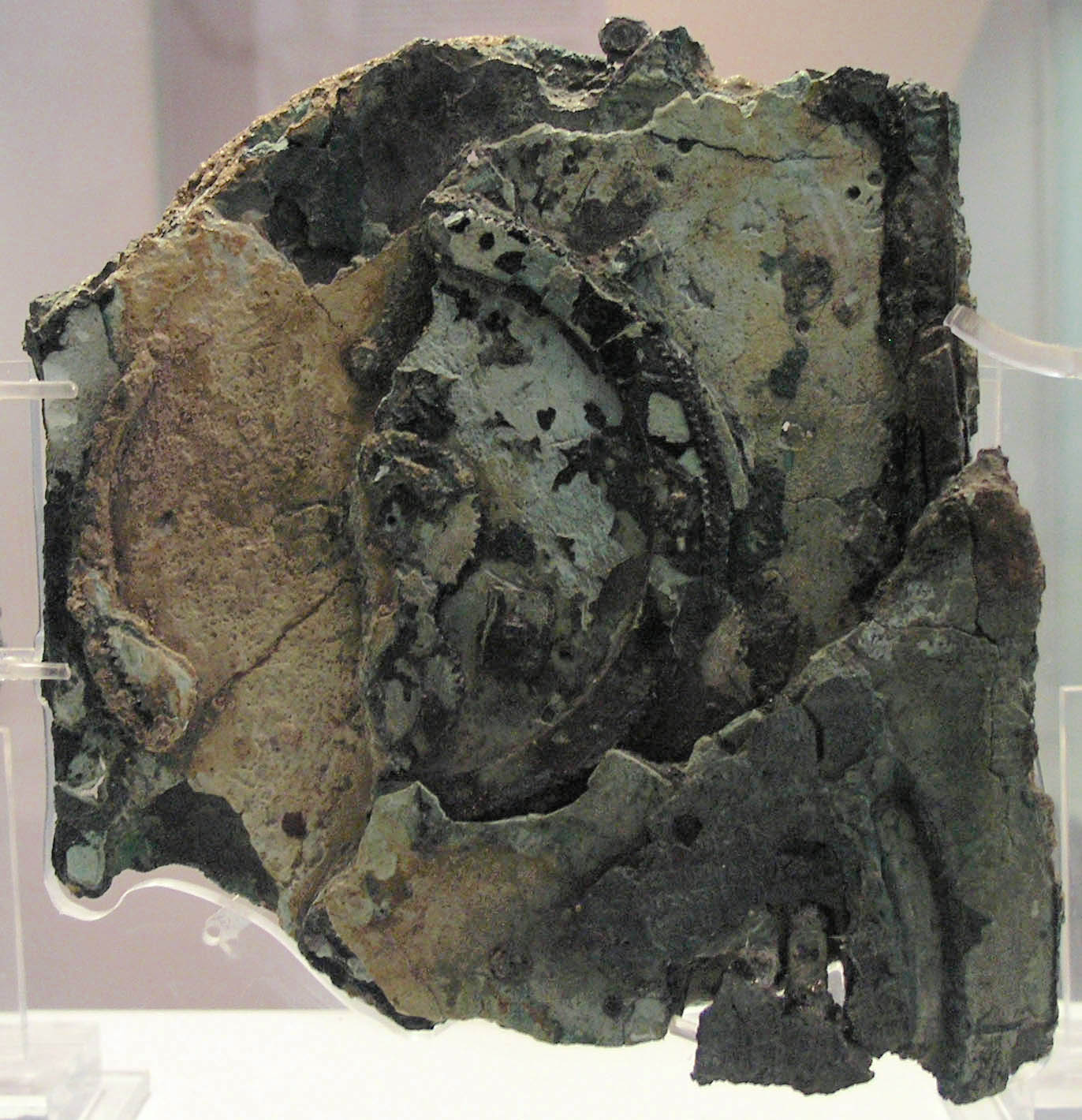 Photo from Wikipedia
Photo from Wikipedia The first evidence of lunar phase display is on a Greek device dating to 205 BC known as the Antikythera mechanism. While more along the lines of a computer than a clock, the device’s most accurate and sophisticated elements are those used to calculate our moon’s phases, once displayed using a rotating half silvered ball.
The Renaissance some twelve hundred years later brought to new heights, along with many liberal arts, the study of astrology and popularized astrological clocks. Displaying the time of day, orbits of many planets, and the phases of the moon, these clocks were religious objects— most built inside grand cathedrals of the period. The astronomical clock in Prague’s Old Town Hall is the oldest operating clock of this kind, completed in 1410.
Clockmakers were quick to translate the large pieces on walls or towers into smaller, more personal clocks. In 1589, Isaac Habrect, maker of Strasburg’s astronomical clock, successfully downsized his work to about four feet tall. Pope Sixtus V is believed to have ordered the smaller clock complete with, of course, a moon phase complication and many intricate automaton figures near the top. Downsizing only continued as years passed. British and German longcase clocks, beginning in the 16th century, prominently featured lunar phase complications— most utilizing the tried and true method of a 59 tooth disc.
Watches, rather than clocks, became increasingly prevalent beginning in the later half of the 16th century and especially so moving into the 17th and 18th centuries. First in large spherical, ovaline, or octagonal shapes to be worn around the neck, these early watches are very rare today but, on occasion, feature lunar phase complications.
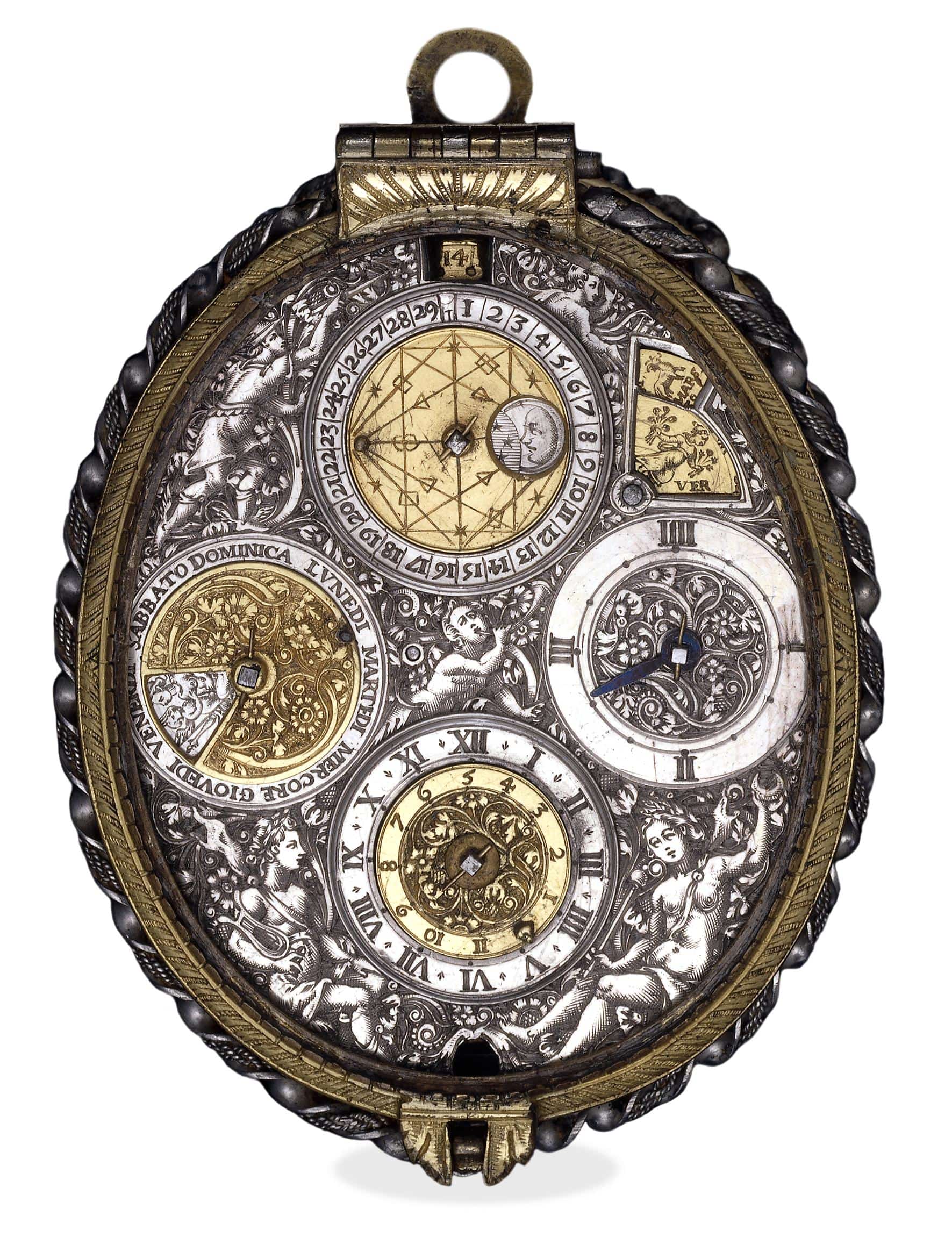 Photo from The British Museum.
Photo from The British Museum. 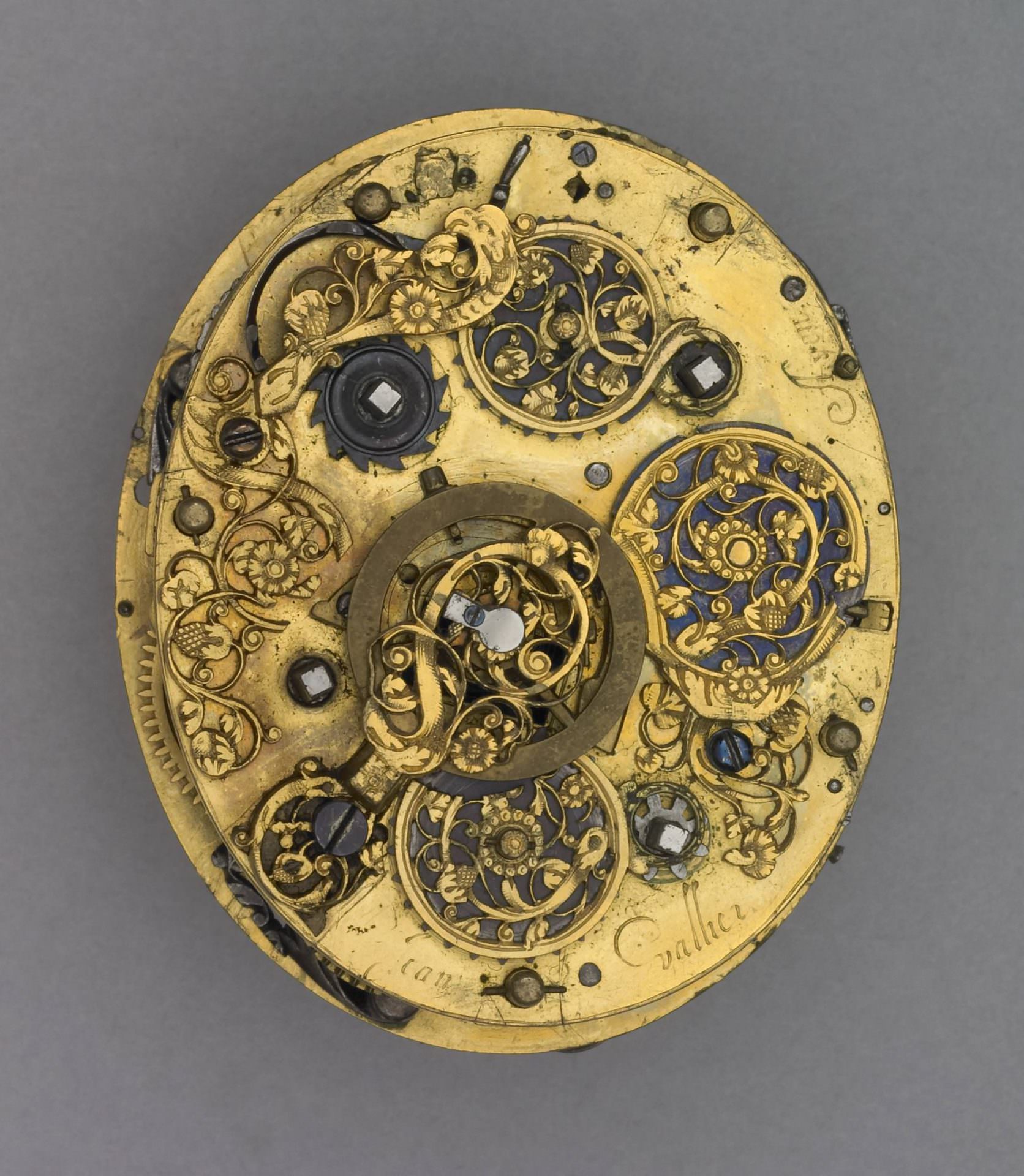 Photo from The British Museum.
Photo from The British Museum. 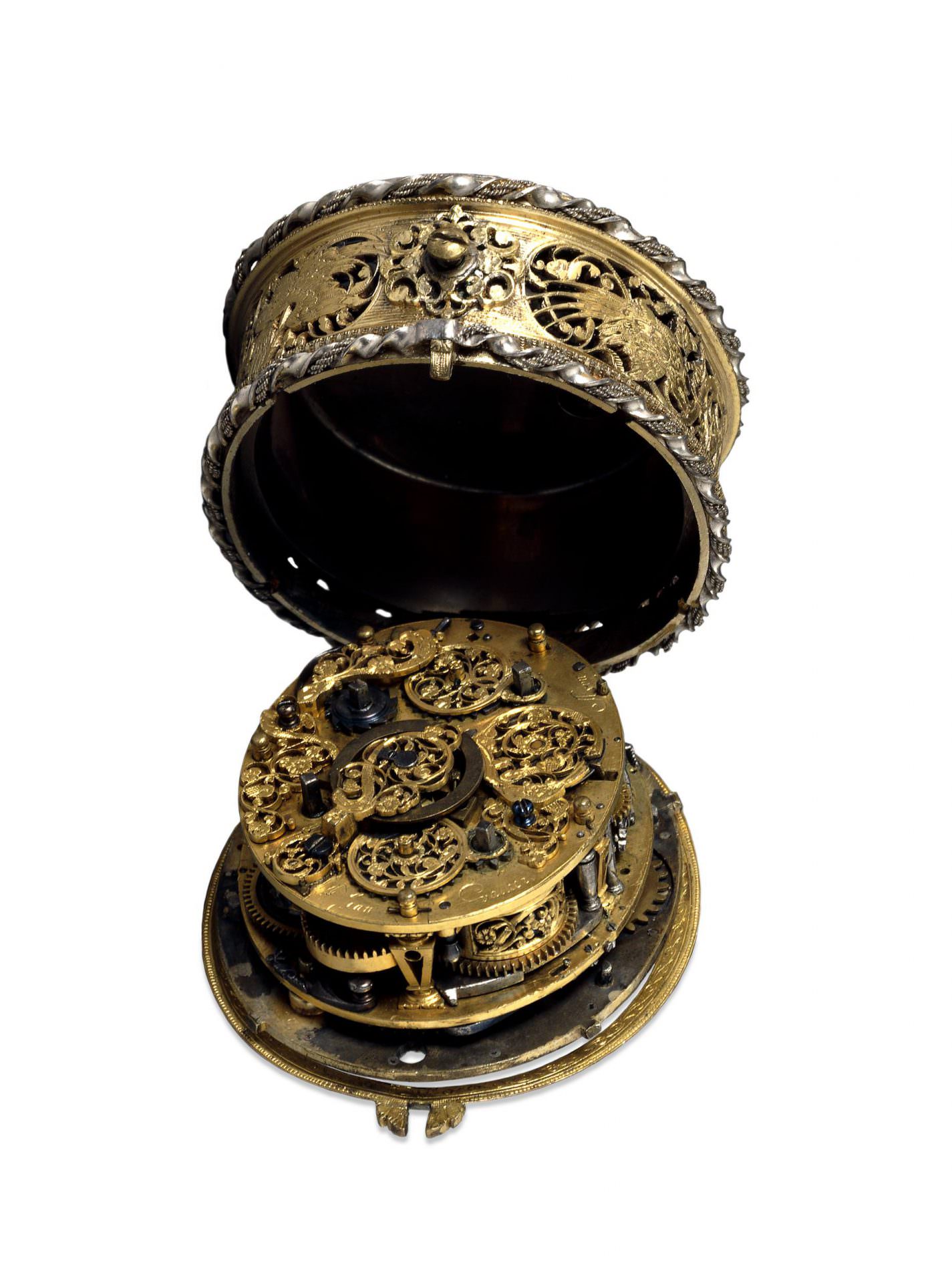 Photo from The British Museum.
Photo from The British Museum. This extremely well preserved example by Jean Vallier of Lyon (picture above), one of the most reputed makers of the time, is currently in London’s The British Museum. Among the Patek Grandmaster Chimes or Lange Grand Complications of its day, the piece was made for a client in Italy around 1630. Housed in a case that is a work of art in and of itself, the movement features complications of moon phase, calendar, alarm, and hour striking.
As horology continued to develop and pocket watches became more commonplace in everyday life, the usefulness of a moon phase complication steadily dwindled. Utility be damned, the complication continued to be included on pieces as an expression of art. The history of the moon phase is parallel with the that of the perpetual calendar complication following the creation of Thomas Mudge’s first perpetual calendar watch in 1762.
As the world moved into wristwatches, the moon phase complication continued to be linked to highly complicated pieces. In these applications where a dial is expressing a large amount of information, the moon phase disc and aperture provide a respite where a lack of text in favor of color is admirable. The lunar phase complication has continually moved away from utilitarianism and towards an expression of art.
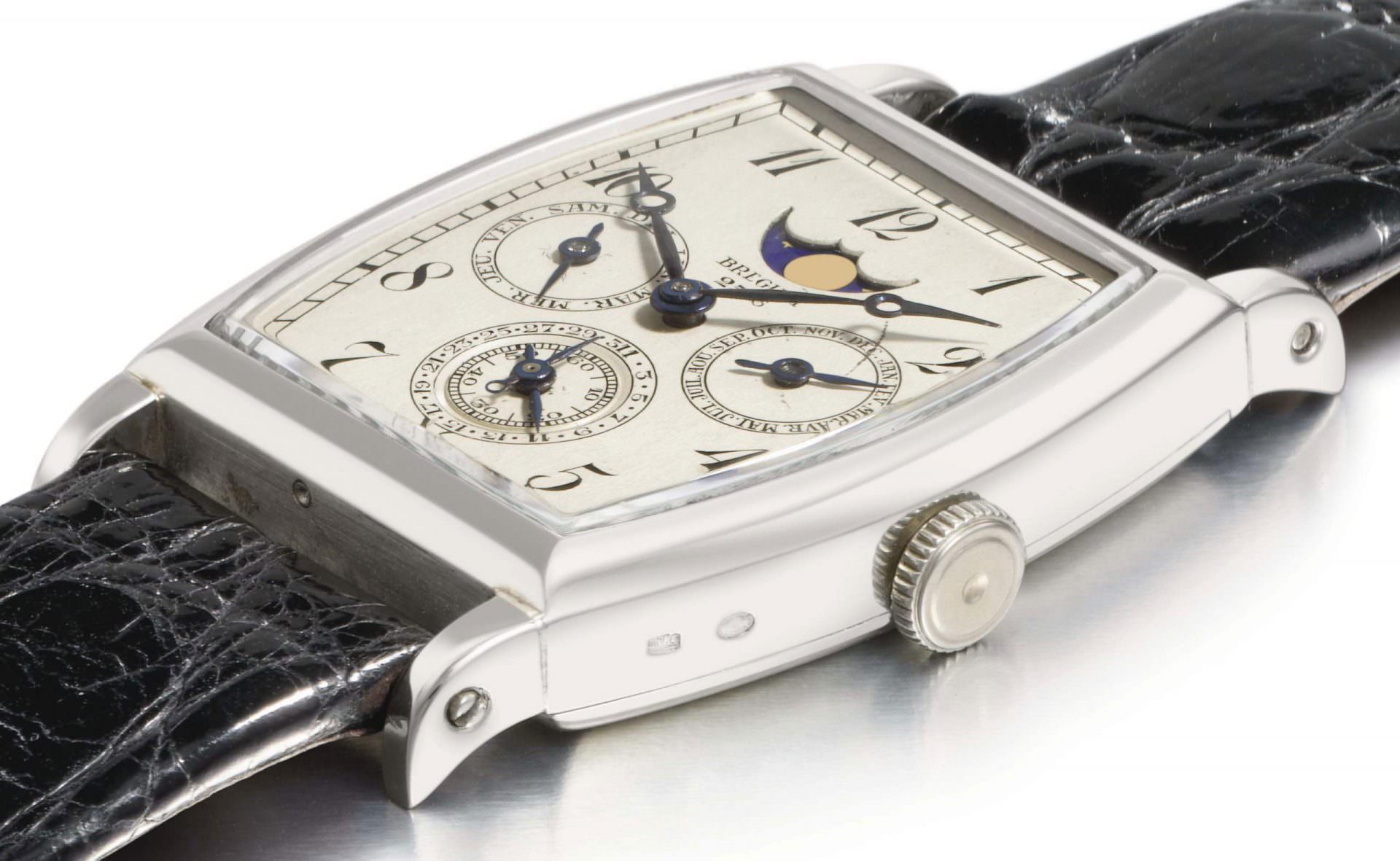
Since the brand’s founding in 1775, Breguet has embodied the idea of creating watches as works of art— look no further than The Art of Breguet by George Daniels for further proof. Breguet no. 2516 was manufactured in 1929, and subsequently delivered to a client in 1934, as the first purpose built perpetual calendar wristwatch. Beyond historical importance, no. 2516 is just exceptionally beautiful. This piece boasts a 18K white gold tonneau shaped case, matte silver dial complete with breguet numerals, and, of course, a pop of understated color in a moon phase indicator.
Last sold in 2011 and since held in a private collection, we won’t hold it against you if the Breguet no. 2516 is out of your price range. Good news is there are numerous moon phase options from the wide world of vintage watches to scratch this itch. The complication really boomed in the 1950s and 1960s as a part of calendar watches and chronographs from the likes of Rolex, Universal Geneve, Omega, Movado, and Heuer.

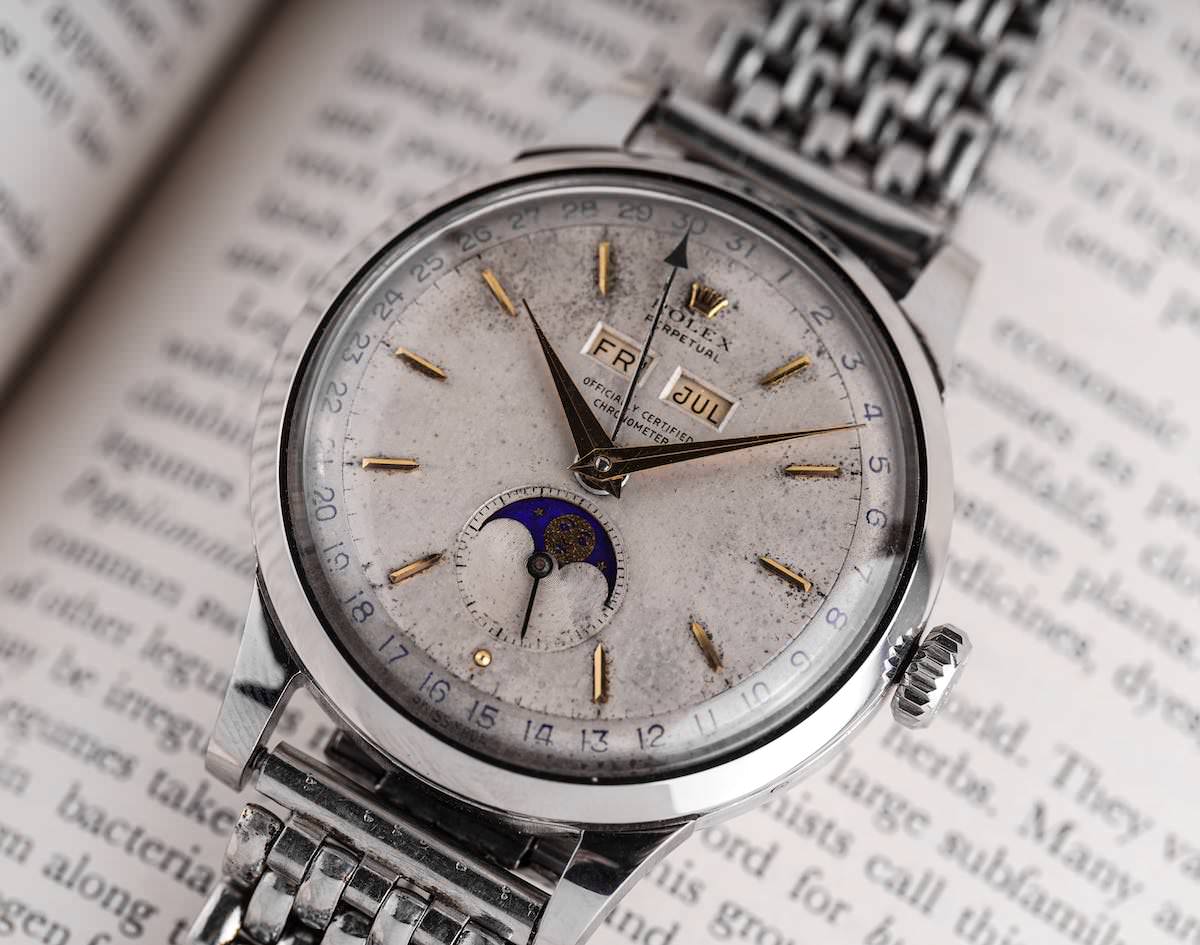
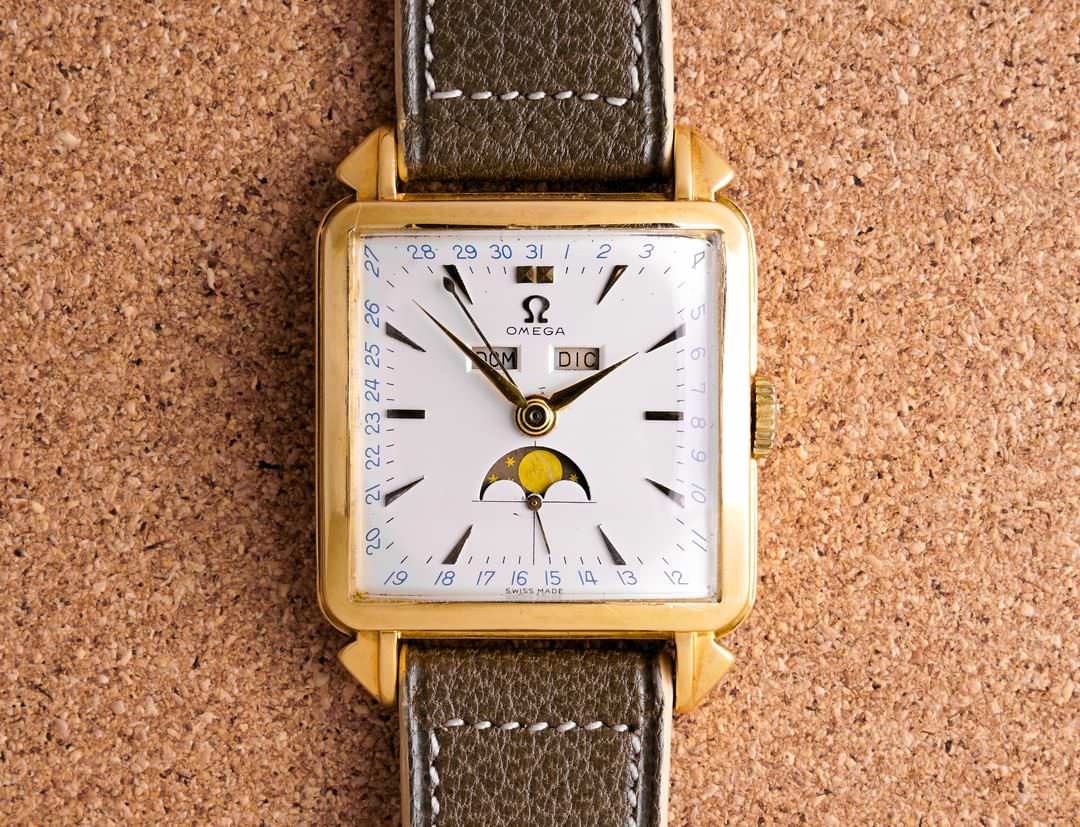
Through the neo-vintage lens there are numerous moon phase options from the likes of Omega, Audemars Piguet, IWC, and Breitling. From an artistic standpoint, the 80s and 90s leave a bit to be desired but any lack of imagination is made up for by choice. From classic dress models in precious metals to integrated stainless-steel sport offerings, many iconic watches of this era were at one point fitted with a moon phase complication. Everyone’s favorite watchmaker with a Calatrava Cross logo, Patek Philippe, has consistently featured a moon phase in their catalogue throughout the century and into our modern watch world of the 2000s.

Check out 'Reference Tracks' our Spotify playlist. We’ll take you through what’s been spinning on the black circle at the C + T offices.

Never miss a watch. Get push notifications for new items and content as well as exclusive access to app only product launches.
Sign up for our newsletter to receive updates and exclusive offers